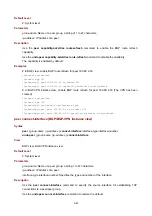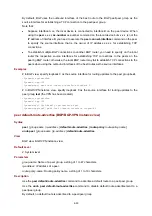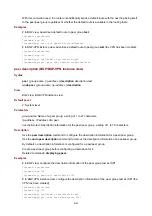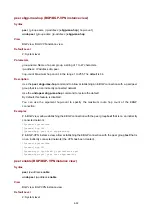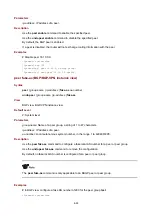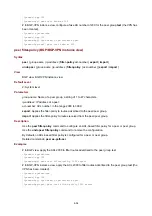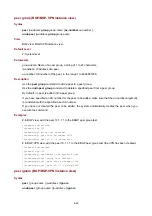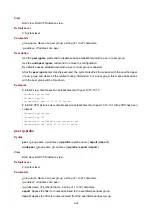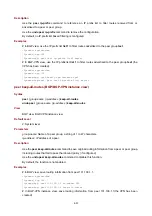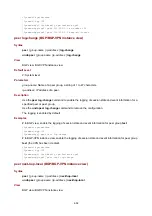
6-51
With this command used, the router unconditionally sends a default route with the next hop being itself
to the peer/peer group regardless of whether the default route is available in the routing table.
Examples
# In BGP view, advertise a default route to peer group
test
.
<Sysname> system-view
[Sysname] bgp 100
[Sysname-bgp] peer test default-route-advertise
# In BGP-VPN instance view, advertise a default route to peer group
test
(the VPN has been created).
<Sysname> system-view
[Sysname] bgp 100
[Sysname-bgp] ipv4-family vpn-instance vpn1
[Sysname-bgp-vpn1] peer test default-route-advertise
peer description (BGP/BGP-VPN instance view)
Syntax
peer
{
group-name
|
ip-address
}
description
description-text
undo peer
{
group-name
|
ip-address
}
description
View
BGP view, BGP-VPN instance view
Default Level
2: System level
Parameters
group-name
: Name of a peer group, a string of 1 to 47 characters.
ip-address
: IP address of a peer.
description-text
: Description information for the peer/peer group, a string of 1 to 79 characters.
Description
Use the
peer description
command to configure the description information for a peer/peer group.
Use the
undo peer description
command to remove the description information of a peer/peer group.
By default, no description information is configured for a peer/peer group.
Create a peer/peer group before configuring a description for it.
Related commands:
display bgp peer
.
Examples
# In BGP view, configure the description information of the peer group test as ISP1.
<Sysname> system-view
[Sysname] bgp 100
[Sysname-bgp] peer test description ISP1
# In BGP-VPN instance view, configure the description information of the peer group test as ISP1(the
VPN has been created).
<Sysname> system-view
[Sysname] bgp 100
[Sysname-bgp] ipv4-family vpn-instance vpn1
[Sysname-bgp-vpn1] peer test description ISP1













